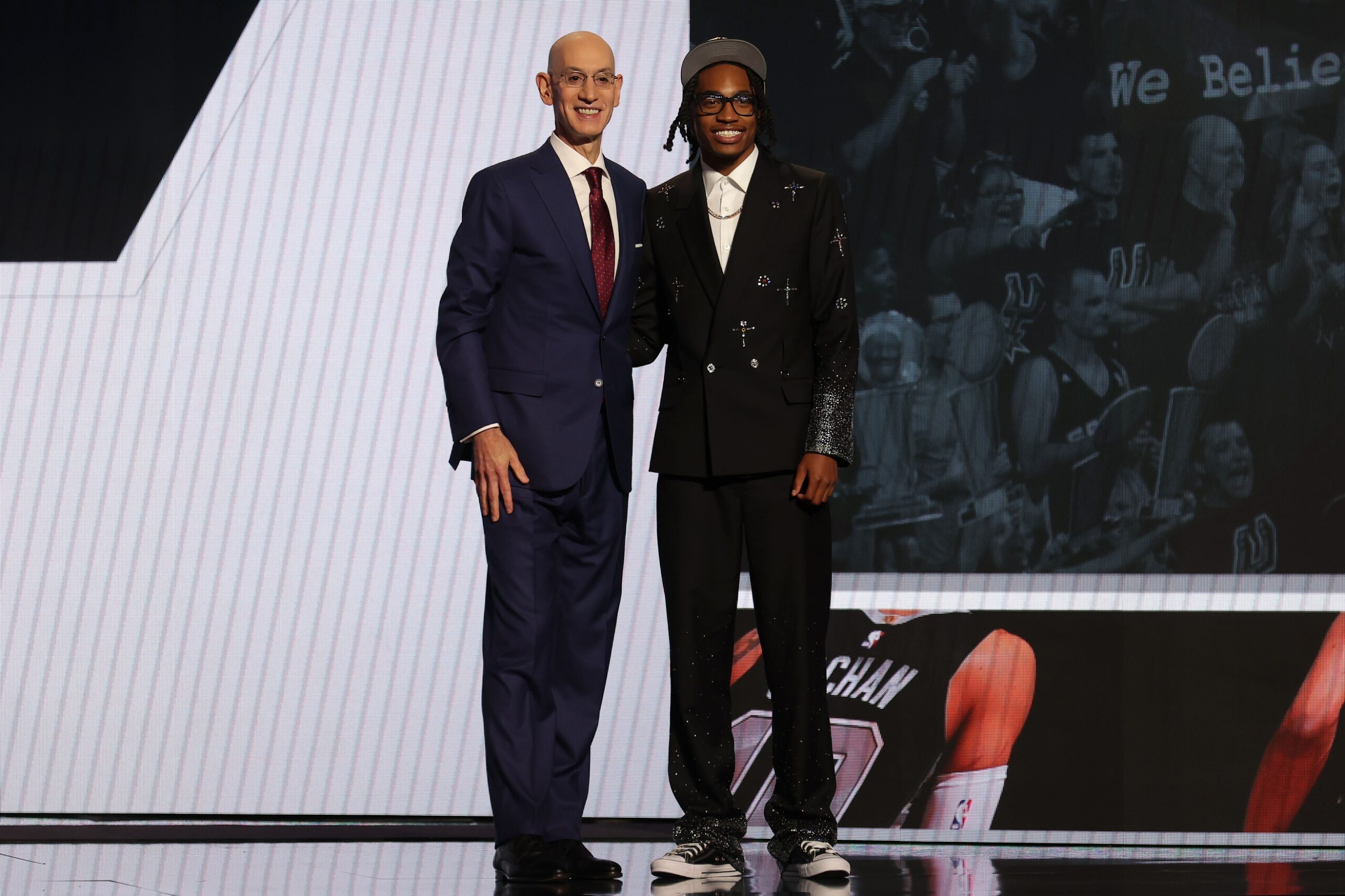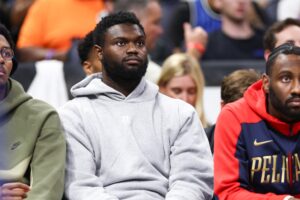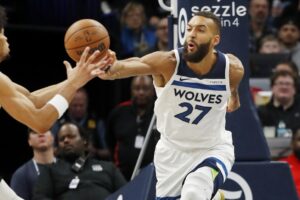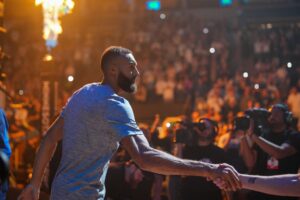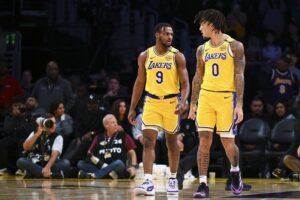As the NBA offseason slowly winds down, several impactful yet underrated moves have flown under the radar. While the Philadelphia 76ers’ acquisition of Paul George was a major headliner, other strategic moves deserve attention for their potential long-term benefits. To be clear, this article will not praise the OKC Thunder’s acquisition of Isaiah Hartenstein and Alex Caruso because those moves have already received recognition. Instead, these will be the underrated deals of free agency.
Former NBA Exec Lists Most Underrated Moves of Free Agency
The Athletic’s John Hollinger writes on the most underrated deals from this year’s free agency.
Warriors’ Klay Thompson Sign-and-Trade
Rather than overpay a declining player for the vibes, the Warriors parlayed him into two different players (Buddy Hield and Kyle Anderson), who together will make less money than Thompson and a random minimum-contract guy. There’s a good chance that each individually will matter more to the Warriors than Thompson would have. (Thompson seems like a good fit in Dallas, incidentally … but Golden State is not Dallas.)
Golden State’s decision to let Thompson leave in a sign-and-trade deal with Dallas was initially met with skepticism. However, this move could prove shrewder than it first appeared. The Warriors acquired Hield and Anderson, who together could contribute more effectively than the aging Thompson. Hield, a proficient three-point shooter, and Anderson, known for his versatile playmaking, provide depth and flexibility to Golden State’s lineup. This trade also allowed the Warriors to stay under the luxury tax apron and maintain their ability to make future moves.
Rockets’ Draft-Pick Recalibration
The one deal from this summer that has the highest ratio of “crazy high upside” to “people aren’t really talking about this” is Houston’s ancillary piece of the Mikal Bridges trade between Brooklyn and New York. Obviously, the Knicks and Nets made their own fascinating bets, but Houston seems to have walked away with something for nothing.
The Houston Rockets capitalized on a complex trade involving draft picks from Brooklyn and Phoenix. By swapping picks, Houston secured valuable future assets, including unprotected first-round picks from Phoenix and an additional swap opportunity. This move positions the Rockets favorably if the Suns’ aging roster leads to future struggles. The Rockets’ strategic maneuvering could pay off significantly if Phoenix’s performance declines, enhancing Houston’s long-term outlook.
Timberwolves Moving into the Draft’s Top 10
We still don’t know exactly how the player will work out. Rob Dillingham might end up being too defensively vulnerable to stay on the floor in the playoffs or not quite offensively gifted enough to be more than a second-unit scorer. He was the eighth pick in a weak draft; history says stardom is hardly guaranteed.
On the other hand, the more I think about the process behind this trade, the more it seems fairly brilliant. The Timberwolves had little capacity to add rotation-caliber players in free agency due to being above the second apron, realistically needed at least one more rotation-level player at any perimeter position over the next two years, and also had a looming succession issue at point guard (Mike Conley Jr. is 36 years old) with no talent waiting in the wings.
The Minnesota Timberwolves made a bold move by trading up to secure Dillingham with the eighth pick. This decision, which involved moving a future first-round pick and a swap, reflects Minnesota’s commitment to strengthening their roster. Dillingham, a promising point guard, fills a crucial role and offers potential value on a cost-effective rookie contract. This move could provide the Timberwolves with a key asset as they navigate their current roster challenges and financial constraints.
Suns Signing Tyus Jones
Phoenix only had a minimum deal to offer Jones, and when the market turned on him, he took it. Credit to the Suns for having the patience to wait out the market before filling their 15th roster spot, and to their ownership for paying the additional $12 million in luxury tax this required rather than just staying at the minimum 14 players.
On the other hand, I don’t think the impact of this move is getting enough attention. The Suns desperately needed both A) a real point guard and B) another starting-caliber player at any position. Jones checked both boxes without costing them any draft picks (not that they had any left to trade) or other assets.
My BORD$ formula had a $14.2 million valuation on Jones, which obviously makes him a screaming bargain on a minimum deal.
The Phoenix Suns’ signing of Jones on a minimum deal is a notable yet underappreciated acquisition. Jones, valued at $14.2 million by Hollinger’s metrics, fills a critical need for the Suns as a reliable point guard and starting-caliber player. His addition improves Phoenix’s chances in a competitive Western Conference, despite the team’s reliance on a short-term solution for a long-term problem. The Suns’ patience in securing Jones without sacrificing assets demonstrates their strategic foresight.
Mavericks’ Tim Hardaway Jr. Trade
Dallas’ sign-and-trade for Thompson hogged the spotlight, and early returns are tilting positive after Josh Green’s 0-for-the-Olympics in Paris. (Dallas sent Green to Charlotte as the matching salary in the deal.)
However, the Mavs’ other moves might have been better. The trade of Hardaway’s $16.2 million salary for Quentin Grimes’ $4.3 million salary set the stage for the Thompson trade and the Naji Marshall signing. The deal only cost them two seconds, and it was critical to keeping the Mavs under the first apron and thus making both the Thompson and Marshall additions cap-legal.
The Dallas Mavericks’ trade of Hardaway Jr. for Grimes is a move with significant implications. This trade not only saved cap space but also upgraded the Mavericks’ roster with Grimes, a younger and potentially more effective player. Grimes’ defensive abilities and three-point shooting complement Dallas’ star duo of Luka Dončić and Kyrie Irving. Additionally, the Mavericks gained a $16.2 million trade exception, providing flexibility which they used to acquire Thompson and Marshall.
The Last Word
In summary, while high-profile transactions like George’s move to Philadelphia received the most attention, these under-the-radar deals may have a substantial impact on their respective teams’ futures. Whether through strategic asset management or shrewd acquisitions, these moves highlight the nuanced decisions shaping the NBA landscape for the coming season.


